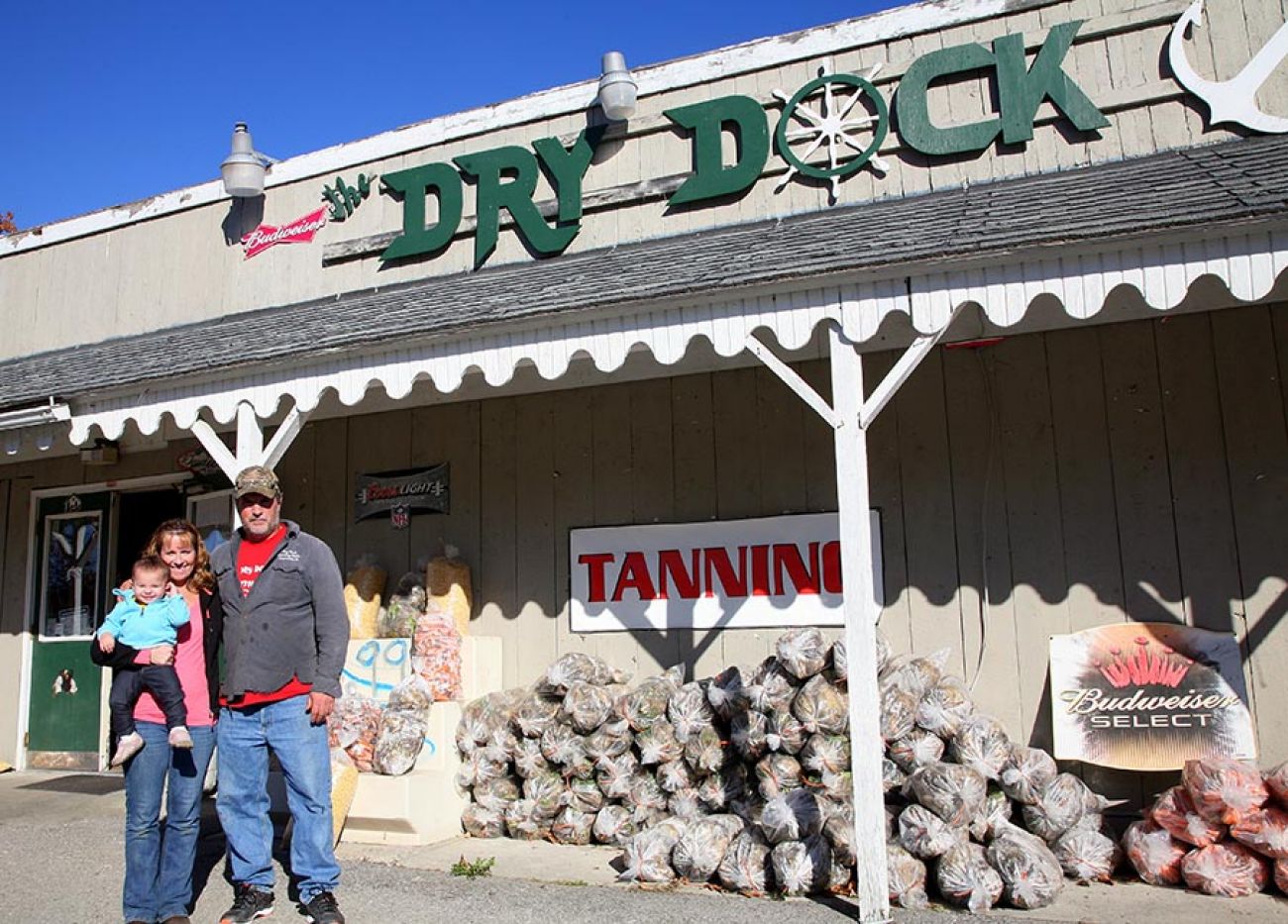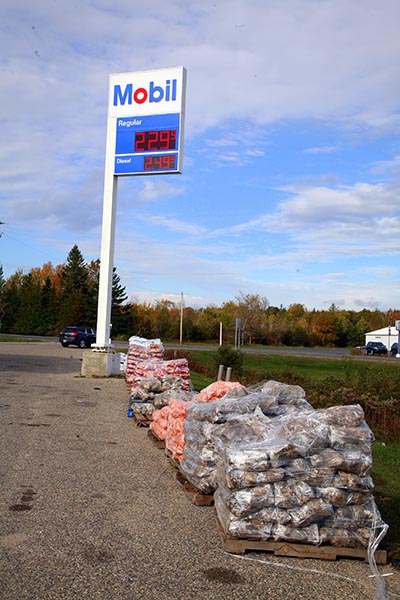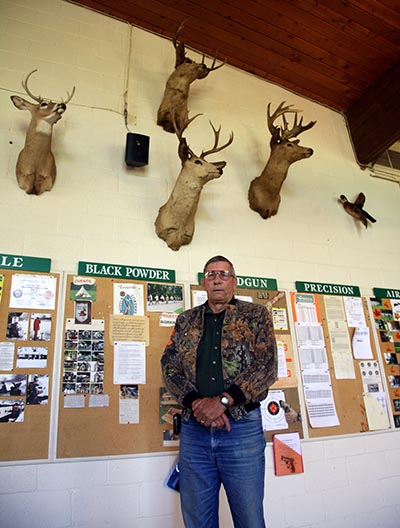As deer hunting season opens, a fierce debate over using bait


The start of the firearm deer hunting season this week has triggered a fresh debate in Michigan over the wisdom of allowing hunters to buy and use bait to attract deer.
The discovery this summer of another Michigan deer infected with chronic wasting disease, or CWD, a fatal neurological disorder, has some state and wildlife experts concerned that the widespread use of bait will bring too many deer into close quarters and accelerate the spread of the disease. Adding to that anxiety is word that yet another deer tested positive for CWD only miles from the western border of the Upper Peninsula in Wisconsin.
On the other side of this issue are many hunters -- more than half-million are expected to purchase licenses for this year’s firearms season -- who will descend on Michigan’s woodlands and farmlands with dreams of bagging a trophy white-tailed deer (Another 100,000 or so will hunt in the archery or muzzleloader season). So too, many stores, gas stations and farmers across Michigan draw income from the deer bait industry.
James DeDecker, an agricultural educator for Michigan State University Extension in Presque Isle County, said it is difficult to estimate how much impact the growing and selling of deer bait has had on the state’s economy, but it’s significant.
“Many farmers I know have turned to growing crops like sugar beets and corn for deer feed. It’s a great market for what we call Grade B produce,” DeDecker said. “Plus, farmers have found they can get one price selling corn in bulk to elevators, but if they bag it up and sell it as deer feed, they can make a lot more per bushel.
“There are a lot of economic challenges facing farmers, especially small farms. They have to move to where the market is, and the deer feed market is lucrative,” he said. “When hunters are basically coming to you, and all you have to do is bag it up and put it on the side of the road, it makes things much more cost effective.”
Choosing sides
The debate over baiting can be heated, as the state Department of Natural Resources discovered when it banned the practice statewide after the first Michigan case of CWD was confirmed in 2008. Hunting groups disagreed with the ban, arguing the use of bait increases the likelihood of a successful hunt. Others simply ignored the edict.
Under intense pressure, the Natural Resources Commission, which sets policy for the DNR, lifted the ban for much of the state in 2011, noting that no other infected deer had been found to that point.
The same can’t be said today.
The infected deer discovered this summer is the eighth identified case in Michigan. State wildlife officials have said, however, they remain cautiously optimistic that the disease is under control, at least for the time being. The diagnosed cases have been confined to a core area in the south central Lower Peninsula.
Moreover, DNA testing showed the deer found this summer was related to four earlier identified infected deer, according to Chad Stewart, a deer and elk specialist at the Michigan Department of Natural Resources. “So far, all eight have been related to each other somehow; most, very closely.”
Up to this point, most of DNR’s focus has been on Ionia, Clinton, Shiawassee, Ingham and Eaton counties, which are all in the designated CWD Management Zone. Working hand in hand with the U.S. Department of Agriculture’s Wildlife Services, the DNR has used sharp shooters to reduce deer numbers in townships where the infected deer have been found. The latest positive deer was found in Ingham County’s Meridian Township.
The agency has also issued more hunting licenses and mandated that successful hunters in the core area submit deer for testing at check-in stations before processing.
Stewart said he believes it has been a successful strategy thus far. “We think we’re doing about as good as you can do dealing with this threat,” he said.
Threat from the West
But the agency’s confidence was tested by a recent report near another region of the state. Last month, Wisconsin officials confirmed a deer at a fenced hunting preserve tested positive for CWD in Oconto County, which is very close to Michigan’s Upper Peninsula. The fear is that if the disease breaches the border, CWD would have a much greater impact in the U.P., where the deer herd isn’t very large and is already physically vulnerable to harsh winters.
“The recent CWD-infected deer was only about 35 miles from the Wisconsin-Michigan border as the crow flies,” said John Pepin, a DNR deputy public information officer who is based in the U.P. “While the deer was inside an enclosed property, there is always a possibility that CWD could have been transmitted to free-ranging deer. It is certainly cause for concern.”
As a result, the DNR is now scrambling to come up with a plan to combat this second front in the potential spread of this disease.
The agency recently formed the Upper Peninsula CWD Task Force made up of DNR officials and representatives from a number of deer hunting groups, including U.P. Whitetails, Inc., the Straits Area Sportsmen’s Club, Wildlife Unlimited of Iron County and Michigan United Conservation Clubs (MUCC) – to name a few.
According to Pepin, one of the keys will be public education and a likely expansion of the “Keep the U.P. CWD Free” campaign that started in 2015. It includes billboards and other outreach programs to make sure hunters know about the threat and how they can help. “We’re trying to educate the public, especially hunters who bring dead deer back home from other states, particularly from Wisconsin,” Pepin said.
Another issue the task force will likely be looking at is the use of bait or supplemental feeding. The use of deer bait – typically apples, carrots, corn and sugar beets – to attract deer has already been banned in the CWD Core Area.
If allowed to spread, CWD could have a devastating impact on the state’s deer herd, and on a deer hunting industry that, according to the U.S. Fish and Wildlife Service, generates more than $2.3 billion in annual economic activity in Michigan as hunters drop money on gear, gas, restaurants and lodging. For many towns in rural areas of the state, in particular, hunters provide a huge boost to the local economy.
“Once CWD is in your county, the odds of you getting rid of it are pretty tough,” Stewart said. “You can’t stop deer from being deer. When you have constant bait on the ground, the deer are going to be attracted to the area. And they will be licking, defecating and urinating in that area. That’s how CWD is spread. And the more animals you’re drawing to that site, the greater the odds of spreading it.”
A thriving economy
DeDecker, of MSU Extension, said he works with many farmers in the northeastern Lower Peninsula, where baiting has remained banned for more than a decade because of an outbreak of bovine tuberculosis, a chronic bacterial disease, which, before CWD turned up, was the biggest threat to the Michigan’s deer herd.
Despite an ongoing deer baiting ban in Alpena, Alcona, Montmorency, Oscoda counties, DeDecker said farmers still grow the crops for deer bait – and stores still sell it.
“The farmers are aware of the ban, and so are the store owners. But the bait isn’t illegal until it’s in the woods,” he said. “They don’t want to lose the revenue. Despite the ban, you can find bait for sale everywhere.”
Not far from DeDecker’s office, The Dry Dock in Rogers City has been selling deer bait – mostly carrots and sugar beets – for as many years as Ted and Jen Urban have owned the store.
The store sells bait by the bag and by the scoop – it has huge piles out back that employees can load into pick-up trucks and trailers. Ted Urban estimates his story sold more bait during the ban than they do now that baiting is again allowed in Presque Isle County.
“At one point, selling deer bait probably brought in 40 percent of our revenue. We would go through seven 42-ton semi loads during a typical hunting season,” said Urban, a lifelong hunter. “This year, we’ll probably only go through two semi loads. I’m not sure if it’s because of all the competition, or there just isn’t that much interest in deer hunting anymore. But there is definitely way more competition nowadays.”
Is bait sporting?
Not all hunters are supportive of baiting, however.
Jon Petzold is president of the Western Wayne County Conservation Association, a 1,000-member shooting club in Plymouth Township, west of Detroit. He said baiting is a divisive issue even among hunters. He remembers hunting years ago at some of the hunt clubs near Alpena where members would put out huge piles of bait to attract deer, a practice that he said left a bad taste in his mouth.
“I’m not a real fan of the practice,” said Petzold, a 69-year-old South Lyon resident. “Over the years, I think it’s gotten to be pretty stupid. Putting out truckloads of bait, I think, is a disservice to the animals. As hunters we like to talk about fair chase. A deer’s stomach is one of the main factors in its behavior. You can’t put out huge piles of bait and not expect them to come in from miles. They don’t have the chance that hunters like to talk about.”
Putting out huge bait piles is no longer legal in Michigan. The DNR has strict guidelines. Where baiting is legal, hunters are only supposed to put out two gallons of bait spread out over a 10-foot by 10-foot area. Petzold said if hunters abided by those rules, he wouldn’t have as much a problem. But, as someone who has hunting property near Escanaba in the U.P. – not far from the Wisconsin border -- he said he is concerned about the threat from CWD and what it could mean for the deer herd.
Whether or not the DNR implements a ban on baiting in the U.P. remains to be seen, but there too there is some concern about the practice, according to Stewart. Because of the long, harsh winters in the U.P., large numbers of deer migrate from the northern part of the peninsula to the south where snowfall totals aren’t as great. They congregate in what biologists call “deer yards.” The fear is that baiting or supplemental feeding in these areas will cause deer to congregate even more. If CWD finds its way into these deer yards, the disease could spread quickly.
“Supplemental feeding is a big part of the culture up in the U.P.. People like to put out a little extra food to help get the deer through the winter. We understand that,” Stewart said. “From a management point of view, it makes sense to have a baiting and feeding ban. But it is a complex issue with lots of considerations.”
Next year, the state is scheduled to take a comprehensive look at the management of the deer herd and hunting guidelines for the first time in three years, according to John Matonich, chairman of the Natural Resources Commission.
“Baiting will definitely be on the table. In fact, everything will be up for review,” said Matonich, who lives near Lake Gogebic in the U.P. “We’re going to look at bag limits, season dates, and the CWD issue.”
Matonich said the NRC will rely heavily on the Upper Peninsula task force, but will also listen to anyone impacted by deer hunting and management.
“The one thing I learned very early on with the commission is how little I knew about all the different aspects of the outdoors -- and I had been a hunter my whole life, said Matonich, an NRC member since 2010. “There are so many different groups who are stakeholders in what we do. We will bring in people from all over the state to get as many different perspectives as possible. There are lots of divisions out there. Our job will be to balance everything out as best we can. At the same time, we are very concerned about CWD.”
Steps to deter disease spread
Chronic wasting disease targets not only deer but other members of the Cervidae family, including elk and moose. Once infected, the disease creates small lesions in the brain and is always fatal. While most wildlife diseases are caused by bacteria or a virus, CWD is spread through mutated proteins called prions. Deer pick them up through direct animal-to-animal interaction or contact with feces and other bodily fluids. Once infected, the animal will become emaciated, can exhibit odd behavior and lose its fear of humans.
In the meantime there are a few things deer hunters can do to help prevent the spread of CWD.
Hunters who bag a deer in the core CWD Management Zone are required to have their deer tested for the disease at one of the five DNR check stations in the area. The stations will be open daily throughout the hunting season. Hunters in this area should also be on the lookout for animals demonstrating odd behavior associated with CWD, and report them to DNR.
Those hunting out of state should remember that it is illegal to bring deer carcasses from states where CWD has been found back to Michigan. That’s especially true of deer from Wisconsin, where the disease is rampant. The DNR said it will be testing deer in the counties closest to the Wisconsin border, and U.P. hunters are encouraged to submit their deer for testing.
Lastly, hunters should not use bait in the counties where it is banned (Alpena, Alcona, Montmorency, Oscoda, Ingham, Clinton, Shiawassee, Eaton and Ionia). Hunters who use bait where it is legal should follow the guidelines established by the DNR.
For more information about CWD’s impact on Michigan, visit www.michigan.gov/cwd.
See what new members are saying about why they donated to Bridge Michigan:
- “In order for this information to be accurate and unbiased it must be underwritten by its readers, not by special interests.” - Larry S.
- “Not many other media sources report on the topics Bridge does.” - Susan B.
- “Your journalism is outstanding and rare these days.” - Mark S.
If you want to ensure the future of nonpartisan, nonprofit Michigan journalism, please become a member today. You, too, will be asked why you donated and maybe we'll feature your quote next time!
 Gas stations, like this one, are among the many businesses across the state that depend on the sale of deer bait to boost revenues during deer hunting season. (Bridge photo by Kurt Kuban)
Gas stations, like this one, are among the many businesses across the state that depend on the sale of deer bait to boost revenues during deer hunting season. (Bridge photo by Kurt Kuban) Jon Petzold is one hunter who opposes the use of deer bait: “As hunters we like to talk about fair chase. A deer’s stomach is one of the main factors in its behavior. You can’t put out huge piles of bait and not expect them to come in from miles. They don’t have the chance that hunters like to talk about.” (Bridge photo by Kurt Kuban)
Jon Petzold is one hunter who opposes the use of deer bait: “As hunters we like to talk about fair chase. A deer’s stomach is one of the main factors in its behavior. You can’t put out huge piles of bait and not expect them to come in from miles. They don’t have the chance that hunters like to talk about.” (Bridge photo by Kurt Kuban)